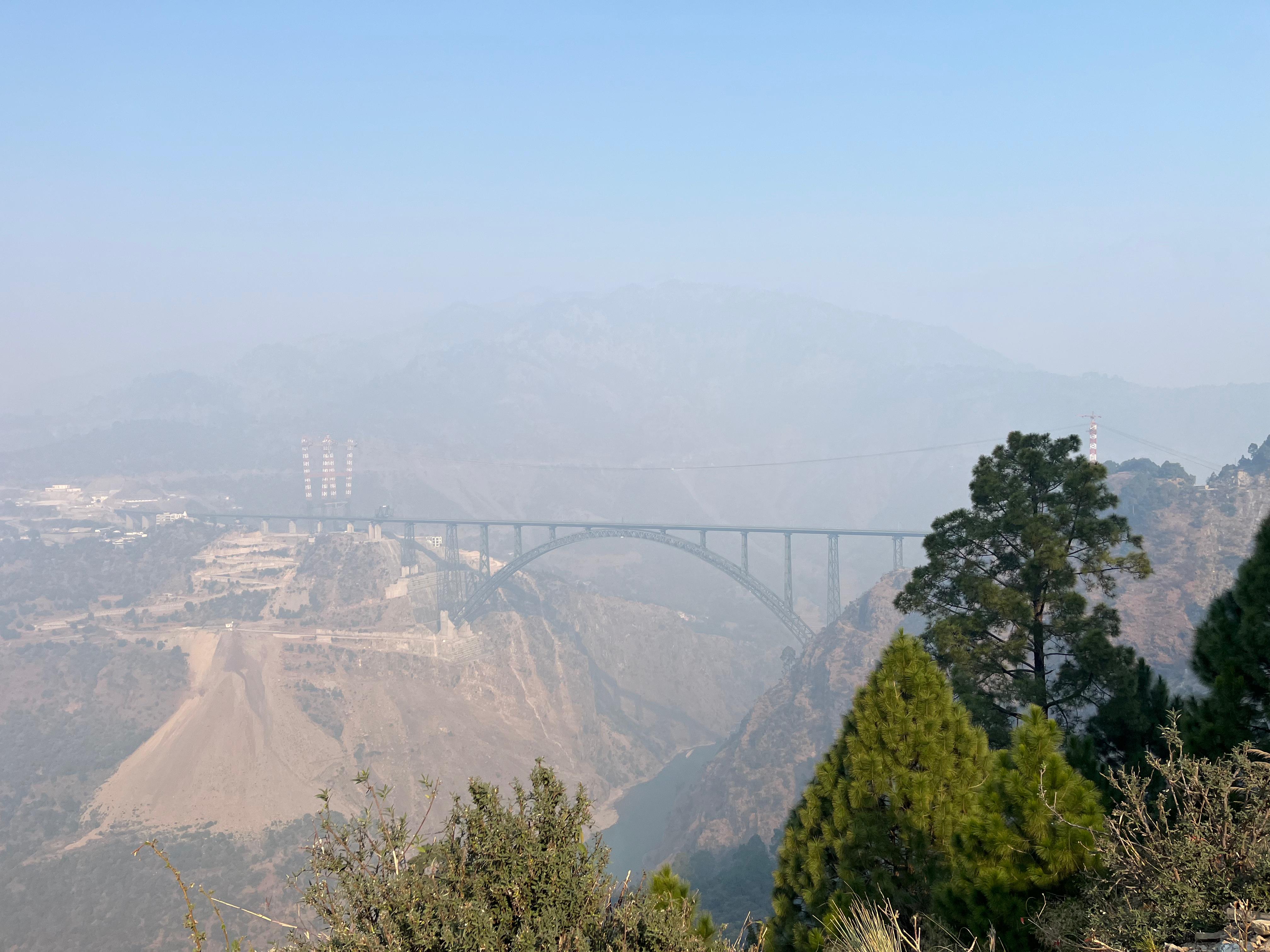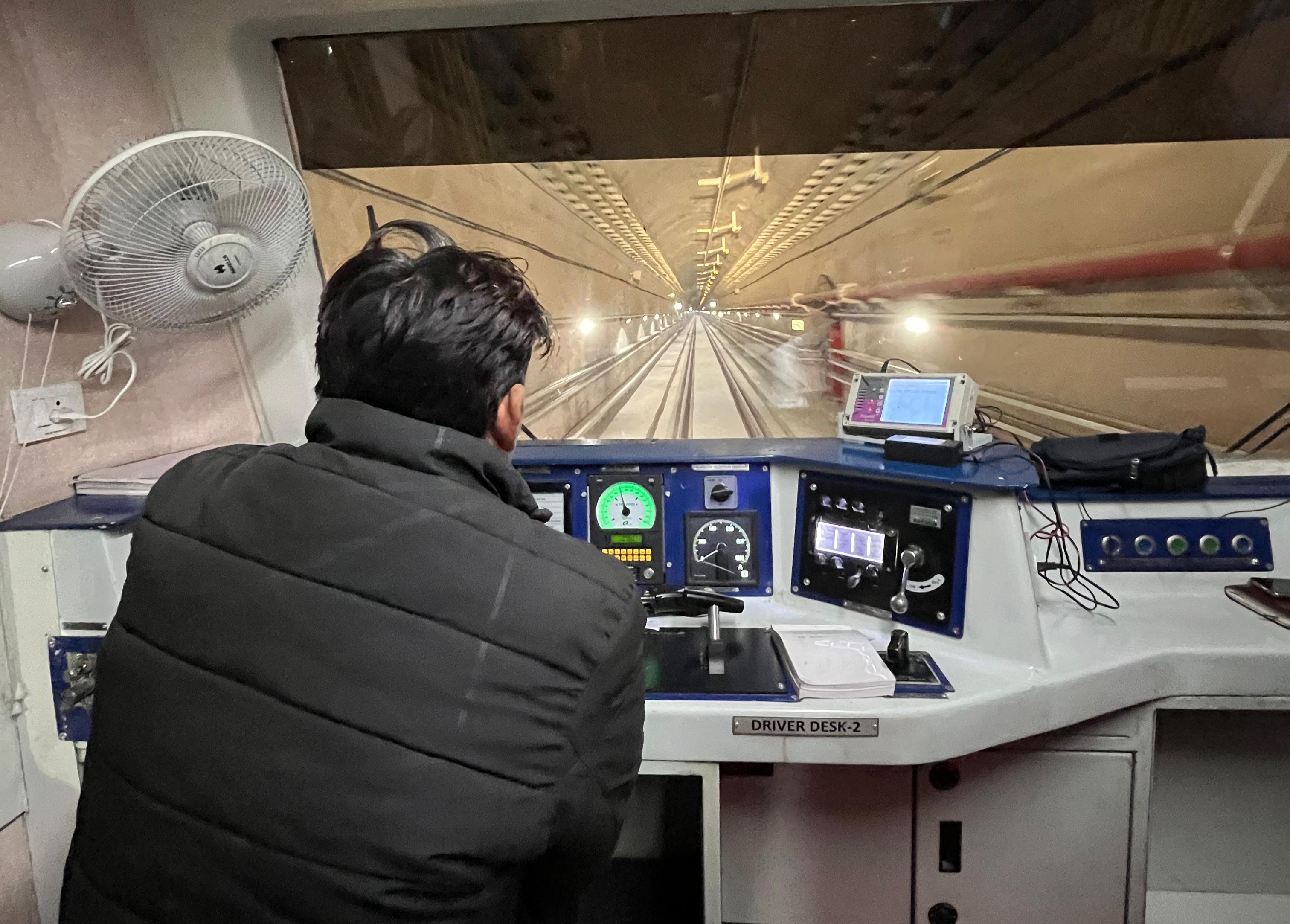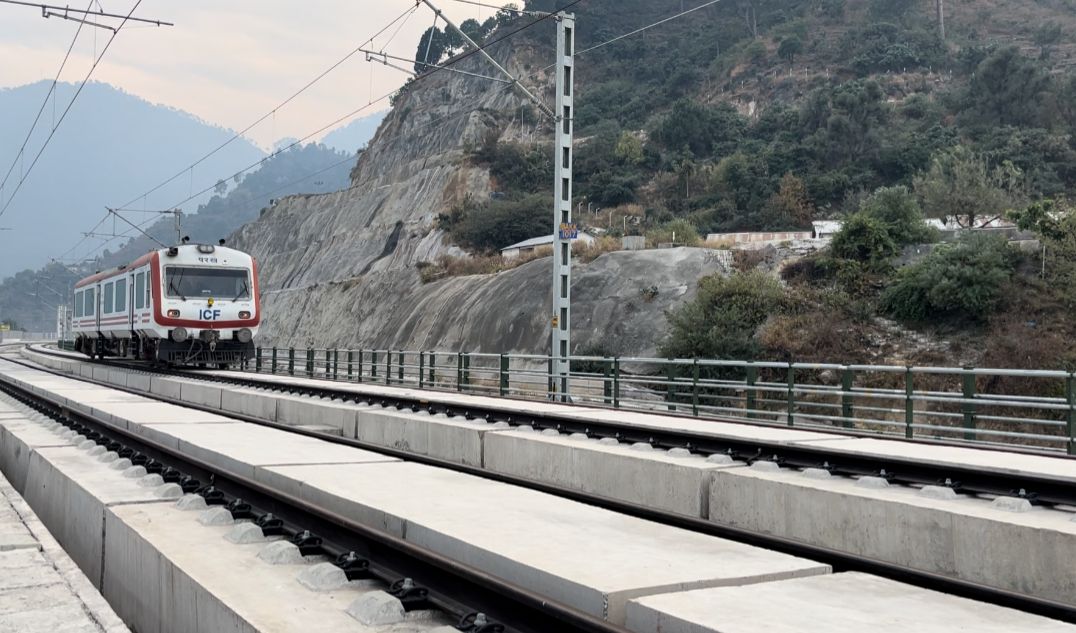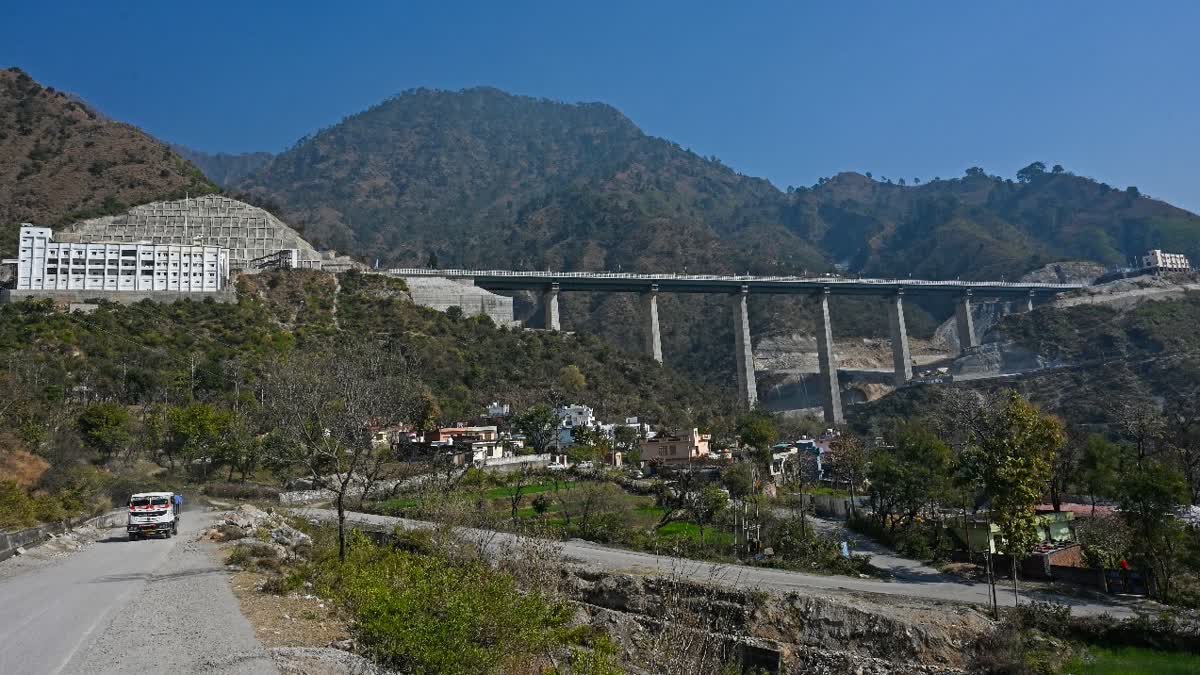Srinagar: High in the Himalayas, where mountains tower over deep valleys and the Chenab River, silently passes through narrow gorges, a railway like no other has come to life. The Udhampur-Srinagar-Baramulla Rail Link stretches 272 kilometres, connecting Kashmir to the rest of the country for the first time by train.

At its centre is the Chenab Bridge, a stunning steel structure that rises 1,178 feet above the river — taller than the Eiffel Tower. The line also passes through nearly 100 kilometres of tunnels carved into the mountains. After years of delays, the railway is finally ready, with officials expecting Prime Minister Narendra Modi to inaugurate the project next month.
Stretching 1,178 feet high, the highest railway bridge—equivalent to a 70-storey building — and featuring an array of engineering marvels including the longest 12.77-kilometre tunnel and India’s first cable-stayed bridge, the long-awaited railway connecting Jammu and Kashmir is set to offer a connection and a path to new possibilities.
Dubbed the Udhampur-Srinagar-Baramulla Rail Link (USBRL), the 272-kilometre project has been under construction since 1997. It is one of India’s most ambitious infrastructure undertakings, with an estimated cost of Rs 41,000 crore. The line traverses some of the world’s most challenging terrain, requiring 36 tunnels and 943 bridges spanning a total of 119 kilometres.
But it was the last leg of the project between Katra and Banihal, which received safety clearance from the Commissioner of Railways Safety last week following successful two-day trial runs on January 7 and 8. This corridor, spanning 111 kilometres long, includes 97 kilometres of tunnels and 37 bridges, including the Chenab Bridge.
“This bridge is an engineering marvel,” said a senior official from Indian Railways. “It’s not just a testament to India’s technical prowess but also a critical link connecting the Kashmir Valley to the rest of the country.”

Overcoming Unprecedented Challenges
Many engineers and officers noted the Katra-Banihal section presented daunting obstacles, from the region’s seismic instability to the harsh climate. Engineers had to contend with loose strata, fault zones, and water ingress. Conventional methods were deemed unsuitable, so the project employed the New Austrian Tunneling Method (NATM), which involves a combination of advanced excavation, reinforcement, and concrete lining techniques.
“We encountered unpredictability at every step,” said a senior engineer who worked on the project. “The terrain was so challenging that what we saw on paper often didn’t match the reality on the ground.”
One example was the construction of Tunnel 1, a 3.2-kilometer stretch connecting Katra and Reasi Railway Station. The site faced interruptions after initial surveys underestimated the geological complexities but achieved a breakthrough last year.
Adding to the challenges was the region’s remoteness, which made it difficult to transport materials. Workers had to adapt to the bitter cold, which often halted construction. “This was a once-in-a-lifetime experience,” the engineer added. “But it enriched our understanding of building in extreme conditions.”
While the infrastructure can withstand earthquakes, studies like the one carried out by the Indian Institute of Technology Delhi’s civil engineering department declared phase 3 as the ‘riskiest track in terms of post seismic functionality’. This is due to the factors such as a high degree of seismicity, susceptibility to landslides, weathered rock mass, and proximity to seismic sources.
Titled The seismic risk of the USBRL project in J&K: Implications towards earthquake resilient infrastructure in the Himalayas, the paper authored by Abdullah Ansari, KS Rao, and AK Jain noted that tunnels in Katra-Banihal section ‘have demonstrated a significant propensity for extensive damages’.
“The tunnel designers, engineers, and risk management authorities may use this study to better understand how different components of the USBRL project will work in a post-seismic situation,” it added.

A Game Changer For The Region
The central government has justified expanding the rail network to Jammu and Kashmir due to its strategic location. Besides, it provides an all-weather and cost-effective transportation system to spur development in the region.
The erstwhile state of J&K is strategically positioned and shares borders with Pakistan and China. The all-weather connectivity to this region, according to the 2021 report of the Ministry of Railways, is very vital for national security, prosperity, and socio-economic development. It identified lack of connectivity as one of the factors hindering development, saying the completion of the line will act as a catalyst for the overall development of the region.
“This project has great significance for security and socio-economic development,” says the report on the expansion of the rail network in J&K and the northeast. “It can play an important role in rapid industrialisation, movement of raw materials and finished products from J&K, and encourage trade and tourism in the region apart from providing opportunities for employment. Similarly, it will be a boon for the development of agriculture, horticulture, and floriculture.”
Once operational, the railway will transform connectivity to Kashmir, a region prone to landslides and highway closures. The Srinagar-Jammu National Highway (NH-44), a lifeline for goods and passengers, frequently shuts down during inclement weather, causing delays and price surges in the Valley.
“It will cut transport costs by 70 percent and end the uncertainty caused by highway closures,” said Faiz Bakshi, general secretary of the Kashmir Chamber of Commerce and Industry. “This is a big move for students, traders, and the tourism sector.”
The rail line is also expected to spur economic growth in the region. According to the J&K Economic Survey 2022-23, the gross state domestic product (GSDP) of Jammu and Kashmir is projected to grow at 8 percent annually, compared to the national average of 7 percent. The government aims to double the GSDP over the next five years, with the railway playing a key role in boosting agriculture, horticulture, and tourism.
Looking Ahead
Although the tracks are ready for the operations, transshipment at Katra Railway Station has dampened excitement. Passengers will have to switch trains at Katra until remodelling at Jammu Railway Station is completed, a process expected to last until March, says a top northern Railway official promising direct train services between Jammu and Srinagar once the work is finished.
“This is temporary,” said a senior railway official. “The remodelling will include new tracks, digital interlocking, and expanded platforms, all aimed at improving passenger safety and operational efficiency.”
For now, train services will operate at a maximum speed of 85 kilometres per hour, with plans to gradually increase speeds as the track stabilises. Officials are finalising timetables for running the trains for daytime only.
Train Schedule
Last month, a train timetable was shared on social media on Kashmir train services, but a Railways official said that was a draft schedule. The timetable follows three-tier clearance, ranging from the Railways Division to the Railways Zone and final clearance from the Railways Board.
“The process to finalise the schedule is underway,” he added. “The evening or night train service will run gradually after sometime.”
Despite the delays and setbacks, engineers and officials involved in the project say it has set a new benchmark for railway construction in mountainous regions.
“This is not just a milestone for Indian Railways but for global engineering,” said a young engineer who worked on the tracks. “It’s an accomplishment that will be studied and admired for years to come.”
Read More:



